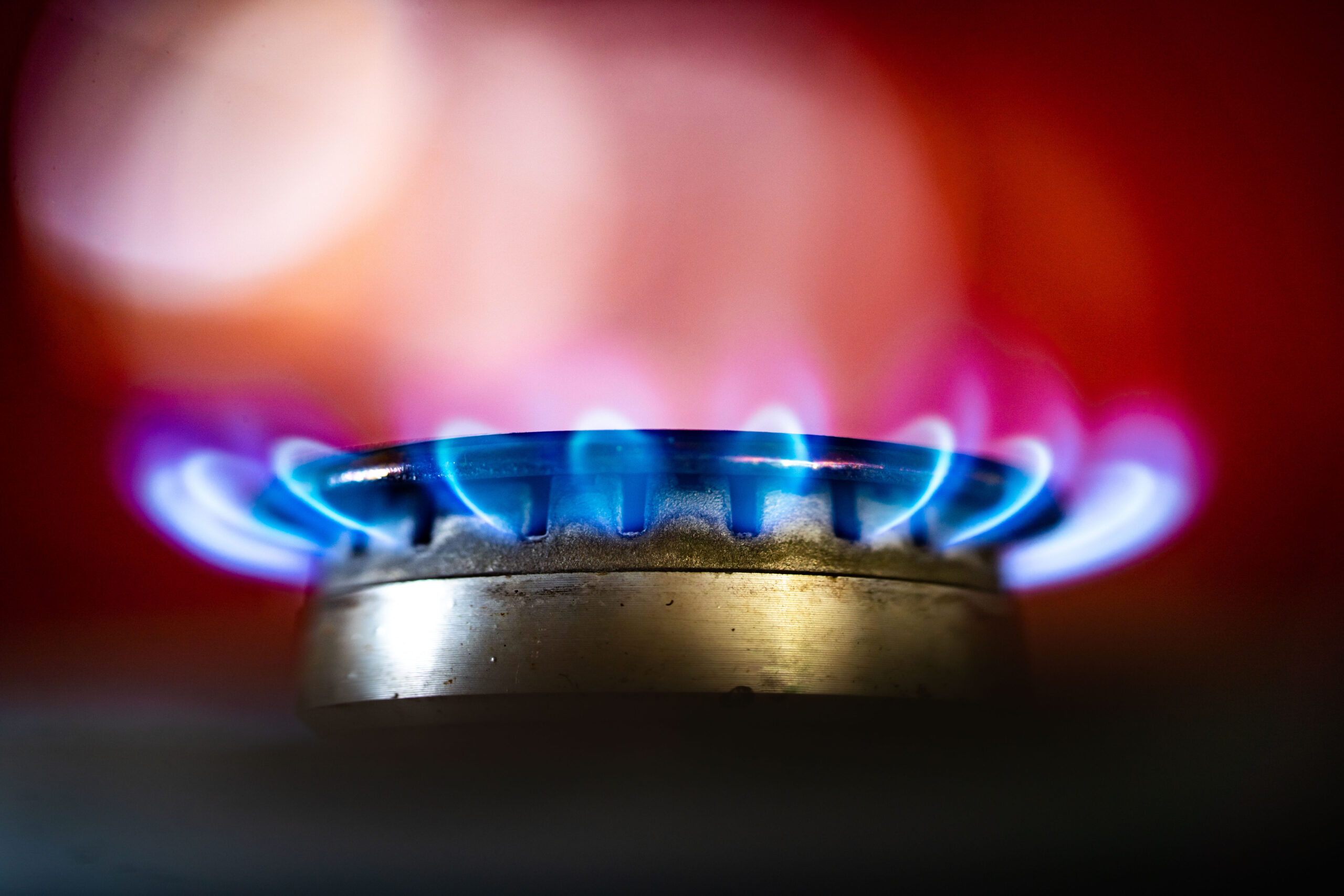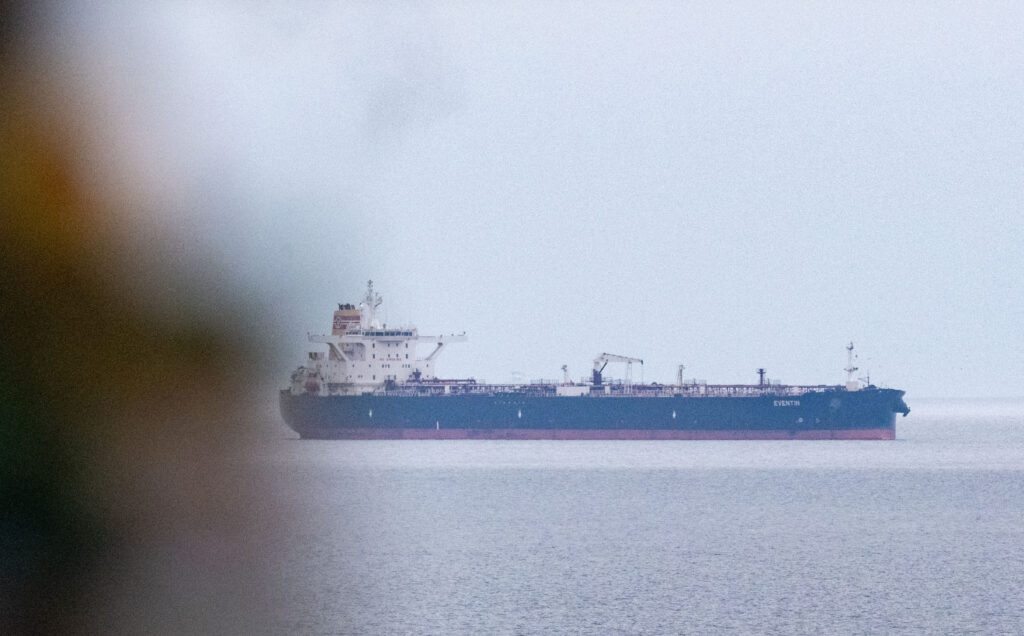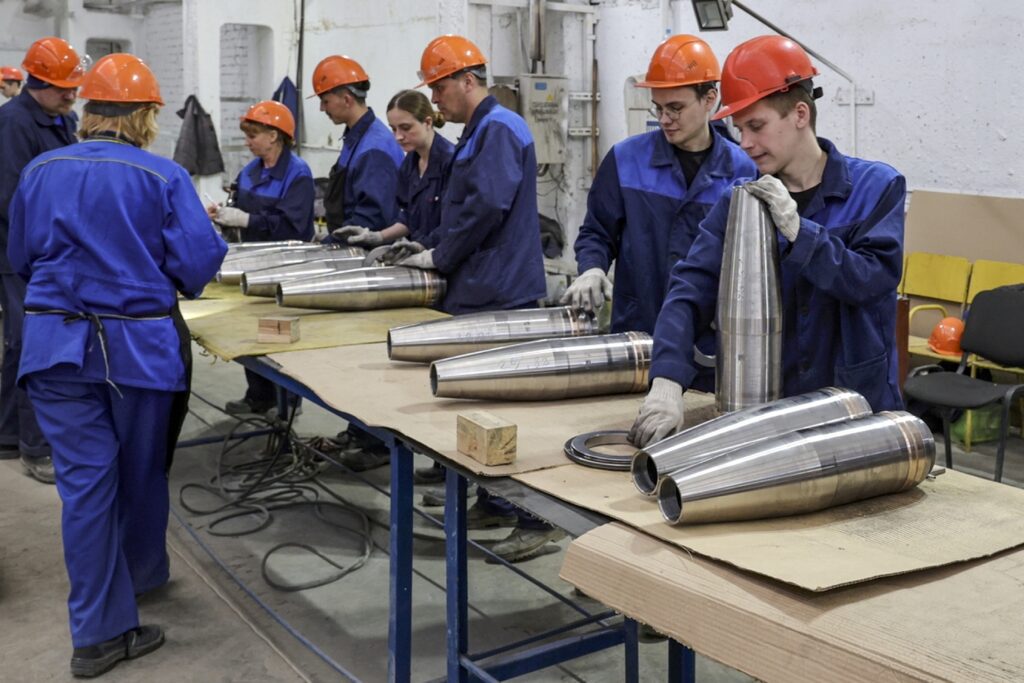Russia’s invasion of Ukraine has fundamentally changed global politics, and there is little doubt that the most dramatic events are yet to come: Russia’s defeat and its decline as a superpower (even if a regional one) will have lasting consequences. However, similar statements about the global economy, if made at all, sound less confident: sanctions against Russia have not destroyed the global financial order, the hundreds of Western companies which escaped from Russia have not seen their position in other markets decline, and the only area where Moscow really had something to say, namely commodity pricing, has either returned to pre-war levels (like oil or wheat) or declined (like steel and some non-ferrous metals). The only serious problem that persists is the situation on the gas market and, to some extent, on the coal market, predominantly in Europe, where these commodities are traded at prices which are 4.0 and 2.4 times higher than a year ago.
The reason behind these developments is that the hostilities in Ukraine triggered a real economic war between Russia and Europe in this local market of several strategic commodities. Enjoying a unique position on the EU gas market (34% of consumption, 42% of imports in 2020) and oil market (23% of consumption, 29% of imports) for decades, Moscow believed that it could manipulate prices based on its quasi-monopoly status. Europe, for its part, finally decided it was right and possible to overcome the Russian dominance, and imposed restrictions on the purchase of Russian energy commodities (although, instead of starting with gas and oil and ending with coal [these sectors are arranged according to the market shares of state-owned companies], the Europeans followed exactly the opposite path). On the one hand, this led to a boom in local demand (in the summer months, EU countries were much more active than usual in buying Russian oil and coal). On the other hand, this triggered counter-measures when Russia decided that Europe could not survive without its gas (Russian analysts have recently been telling us every week that the Old World will not survive without Gazprom through the winter): first, Russia drastically reduced the supplies and then, «in a fit of temper,» it shut down both branches of Nord Stream last week for a prolonged period.
In my view, the intermediate outcomes of this gas war can already be summed up, and they do not look comforting to the Kremlin. I believe that Putin’s attempt to «attack» Europe on the energy front was his second significant mistake this year (Sergei Medvedev put it on a par with the launch of full-scale aggression against Ukraine on 24 February and the announcement of mobilisation on 21 September 2022, but I would call it a tactical error while the latter two can be seen as strategic mistakes). However, what these miscalculations have in common is that the decisions in all these cases were based on a mythologised view of reality. Moreover, they proved to be very hasty and could not be reconsidered.
It is widely known that Gazprom significantly reduced its gas supplies to Europe in the first half of this summer, mainly by cutting the throughput in the Nord Stream 1 pipeline: the supplies dropped from 170 million cubic metres per day in May to 67 million cubic metres per day on 15 June, then to 33 million cubic metres per day from 27 July, stopping altogether from 31 August onwards. The «scheduled work» which was initiated at the time ended in a disaster on 26 September and the Baltic route for gas to Europe is now closed, most likely forever. However, Moscow’s actions convinced Europeans by mid-summer that it was worth preparing for the worst, and V. Putin gave them enough time for that, flipping the cards almost four months before the onset of cold weather. The Old World started to actively reduce gas consumption, switching to alternative fuels, reducing production of the least energy-intensive goods (e.g. fertilisers) and looking for new sources of supply, focusing primarily on Norway (a gas pipeline from Norway to Poland was opened on 30 September) and the Middle East (Qatar and Germany have been approaching new deals in recent days). The latter is not surprising as suppliers are now trying to set prices for long-term contracts before the situation on the European gas market becomes relatively stable. As a result, the EU’s underground gas storage facilities were filled at 88.4% by 1 October, a number of Russian energy assets were requisitioned and subsidy programmes for consumers were approved in the vast majority of EU countries. Consequently, the roaring demand started to subside and the gas price, which had peaked at above USD 3400 per thousand of cubic metres (Kcm), has now fallen to USD 1800 and has every chance of stabilising below USD 1000/Kcm by the end of the year. Russia, which was generating huge income from oil and gas throughout the summer months, is already facing falling revenues in the context of the endless expenditure on the war in Ukraine, which has resulted in a federal budget deficit.
What kind of consequences could this have for the Russian economy? Quite obviously, we are talking about a crisis of the whole oil and gas industry, since Russia’s withdrawal from the European market cannot be fully compensated. The situation with gas will be more difficult than in other market segments. For the last 8 months, exports have shrunk by more than 37.5%, with production falling almost 14.6%. For several months now, the surplus gas has been burnt in enormous quantities (up to 4.5 million cubic metres per day), both at the production sites and at the entry points of the export pipelines, and the disruption of the Nord Stream will make this environmental disaster permanent. The problem is aggravated by the fact that the main gas pipeline to China is not connected to the main production sites, which is why the excess pumping capacity, still available in the east, cannot save the situation. The new pipeline to China, which Putin and Xi Jinping discussed at the meeting in Samarkand, has not yet received a green light from Beijing and, as such, cannot be taken into account yet. The programme for the development of the liquefied natural gas production is frozen because of the embargo on supplies of European and American equipment. Moreover, the oil situation is not as good as it seemed in summer. With the looming EU ban on imports of Russian oil (starting on 5 December) and oil products (from 5 March 2023 onwards), many European consumers are eager to stock up, which drives demand (in fact, it rose by almost 20% between February to August). However, this is only a temporary phenomenon, and once the embargo is lifted, China and India will not be able to absorb the released volumes, most likely reaching almost 1.5 million barrels per day by the beginning of next year, and at least 2.5 million barrels per day by the end of the first quarter of 2023. The reorientation to new markets, which commenced very successfully in the first half of 2022, will take one or two years to complete (and will be complicated by the introduction of a price cap on Russian energy commodities, sanctions on sea carriers transporting oil from Russia, and the natural intensification of competition). Most likely, Moscow will still be able to push its oil on world markets (as opposed to some of its gas), but a local failure of exports (and production) in 2023 is guaranteed. At the same time, there is no doubt that most supplies will be produced at a significant discount (even where no price cap is introduced). For example, one can look at India, where Iraqi suppliers are now delivering oil at a discount of USD 9 per barrel versus the price offered by Moscow). In other words, Russia’s energy commodities may be doomed to remain undervalued at least until the change of power in Russia.
However, in order to understand the overall picture, one should keep in mind that Russian gas exports account for «only» 32−33% of its production, while the respective figure for oil (including oil products) approaches 72% (all data for 2021). Therefore, even a 50−60% drop in gas exports would result in an 18−20% decrease in gas production, which would lead to a loss of RUB 800−900 billion in federal budget revenues but would not kill the industry, even if the new pipeline to China is not built. On the contrary, a reduction in demand for oil by even 2 million barrels per day would trigger shutdowns of hundreds of wells and, equally importantly, a significant surplus in oil refining capacity (also, exports to China are unlikely to increase because both the ESPO pipeline and the railway transport capacity would be exhausted). Due to the peculiarities of taxation in the oil industry, the losses will be much greater here than those caused by declining gas exports, and could reach 3−3.2 trillion roubles in lost budget revenues, thus having a much greater impact on growth in the real economy because the thousands of state-owned and private Russian companies rely on the oil industry in their business.
In other words, by engaging in an energy war with Europe, Moscow overestimated its strength, much as it did by engaging in a real war with Ukraine. A certain (and temporary) success could have been attained if the Kremlin had played the role of a «responsible supplier» for some time and embraced Europe’s conditions, then dramatically changing the rules of the game just before the onset of cold weather. However, the signals which put Russia’s reliability into question had been sent a long time ago, so Europeans began to prepare for the worst-case scenario even before Russia’s invasion of Ukraine. They further multiplied their efforts this summer, which means they will certainly fare well and survive the winter without catastrophic consequences. Indeed, European businesses are now almost in unison dreaming of returning to ‘business as usual’ in relations with Russia, and citizens are outraged by huge utility bills. However, this is more of a whimper than a sign of protest. For Europe, the deal is clear: no one will bow to Putin for the sake of increased supplies, and no one will force Ukraine to make concessions to Russia in the name of sustainable transit (I believe that this is why the Nord Stream pipeline was blown up).
At the same time, the events of 2022 may significantly accelerate the transformation of the global energy balance: demand for oil will begin to shift to the global South, while the North (i.e. Europe, followed by North America), will even more actively reorient itself towards renewable energy sources. In this scenario, competition on the oil market will only intensify, and prices of USD 50 per barrel or even lower will become realistic within just a few years. This is why, in the foreseeable future, Russia will most probably have to wrap its mind around the loss of its status, not only as a military and political superpower, but also as an energy superpower (indeed, President Vladimir Putin spoke about this very role in 2005−2007). This certainly does not mean that the oil and gas industry is going to die out: the Russian economy is quite capable of generating demand for gas and oil, if not at the current production scale then at fairly comparable levels, consuming up to 500−530 billion cubic metres of gas and 240−260 million tons of oil per year (i.e. about 75% and 60% of the current production). Russian domestic prices are quite profitable for gas producers, and petrol is not cheaper in Russia than in the United States. If the oversupply creates additional competition on the market, domestic prices may even drop, which will be favourable for both citizens and businesses. Of course, the country will need to figure out how to fund its budget, but sooner or later Russia will need to become a more ‘normal’ country anyway, given that 140 million people cannot live off of raw materials alone.
At present, we do not know how 2022 will end and how market sentiments will evolve in the coming years. However, it is quite likely that we have already seen almost all the events that could create shortages and rising demand for energy commodities. In the future, all the major technological trends (i.e. the increased use of green energy, improved and cheaper extraction of conventional energy resources, reduced consumption of fossil fuels, a shift towards a less consumption-driven growth in leading countries) will undermine the role and influence of commodity suppliers. And the fact that this will coincide with Russia’s massive geopolitical defeat raise hopes that Russia and its society will finally begin to change…










